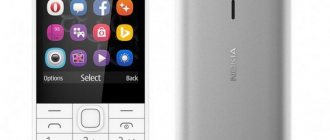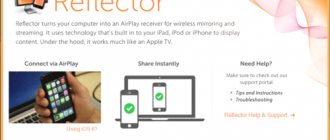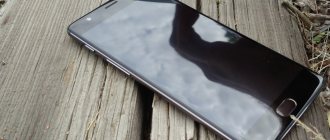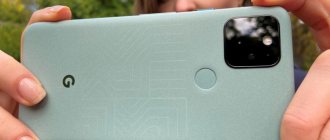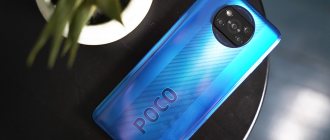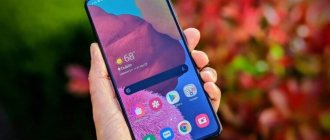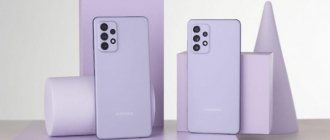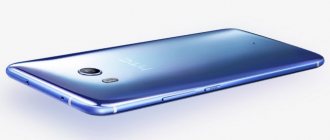Recently, smartphone developers have been trying to move away from using plastic. Most often they prefer metal: cases made of this material are reliable and pleasant to the touch.
But at the same time, they are also boring. It is quite difficult to build something special out of metal, so it turns out that almost all metal models are similar to each other from the back. Another thing is glass: smartphones with both the front and back parts made of Gorilla Glass or something similar look very fresh and nice. Yes, there are certain questions about the reliability of this material (glass is much easier to damage than metal), but this is the price to pay for that very beauty and unusualness.
Apple was the first to release a smartphone with a glass body – we are talking about the iPhone 4 of 2010.
Then there was some lull, and even the Cupertino company itself switched to metal in its next devices, but by 2022, glass models appeared in the lineups of most manufacturers. In this material, we have collected ten worthy smartphones in cases made of transparent material.
Meizu U20 (11,990 rubles, glass manufacturer not specified)
The U20 model is an analogue of the Meizu M3E. The main difference between them is precisely the case material: in the latter case we are talking about metal, but in the case of Meizu U20 we have glass. The device is quite good for its price: a high-quality Full HD screen with a diagonal of 5.5 inches, a 3260 mAh battery, a fairly fast MediaTek chipset with an 8-core central processor.
Alternatives from the Meizu line: U10 - essentially the same, but more compact and a little cheaper.
OPPO R1
Another masterpiece of design art with a glass back cover. However, it is not just tempered glass that is used, but sapphire glass. In addition, it has a pattern in the shape of the facets of a precious stone and an incredibly beautiful violet-blue color. Appearance is the main advantage of a smartphone.
The “filling” corresponds to a middle-class device. It is powered by the Snapdragon 615 chipset, paired with 2GB of RAM and 16GB of storage. The non-removable battery has a capacity of 2420 mAh. The 13 MP main camera supports video recording in Full HD format.
Price: about 25,000 rubles.
LG G6 (51,990 rubles, Gorilla Glass 3 and Gorilla Glass 5)
LG used glass for the first time in this model; previously it preferred plastic (G, G2 and G3), leather (G4) and metal (G5). It is curious that the front part of the smartphone is covered with Gorilla Glass 3, and the back with the more modern Gorilla Glass 5. Well, the most interesting thing is that the G6 complies with the American military standard MIL-STD-810G. This means that the smartphone can be dropped onto a hard surface from a height of a meter, and the case will not shatter into thousands of fragments. It is clear that it is better not to experiment (out of sin), and yet this fact enhances the feeling of reliability.
Alternatives from the LG line: none.
Flagships
Huawei P30 Pro
The coolest is still the Chinese Huawei P30 Pro, made in a glass case with an aluminum frame. It claims IP68 water protection and the ability to be submerged under water to a depth of 2 meters for 30 minutes. In addition to the cool body, the smartphone has an OLED matrix with HDR10 and an acoustic resonator, which allows you to get rid of the usual earpiece speaker.
Inside there is a 7-nm Kirin 980 processor, on the back there is a 4-module camera with a 40 MP main sensor, f/1.6 aperture and optical stabilization. Plus, there is a unique periscope telephoto optics that provides 5x optical zoom without loss of quality; 10x – digital. For example photos, see the Huawei P30 Pro review.
Inside there is a large 4200 mAh battery, providing really high autonomy, there is fast charging of 40 W (70% in 30 minutes), support for Dolby Atmos, reverse charging.
Flaws:
- No 3.5mm headphone jack.
- There are no stereo speakers, there is a slot for a Nano Memory flash drive.
Huawei P30 Pro is an expensive smartphone, but it is worth the money. It has almost everything, including a really durable glass body.
Samsung Galaxy S10+
The second coolest is the Korean flagship Samsung S10+ in a cool Gorilla Glass 6 case on the screen and Gorilla Glass 5 on the back cover. Like the Huawei P30 Pro, Samsung also received water protection and is able to survive 30 minutes under water at a depth of 1.5 meters.
What's good:
- A flawless Amoled screen with HDR10+, recognized as the best in the world by Display Mate. The resolution is 3040x1440, which gives a pixel density of 522 per inch.
- Cool 8nm Exynos 9820 processor.
- Cool 3-module camera with a 12 MP main sensor with f/1.5-2.4 aperture and optical stabilization. You can find examples of photos in the Samsung S10 Plus review.
- The best front camera with autofocus (very rare). Only the Asus Zenfone 6 takes better photographs, but there the front camera is replaced by a rear camera.
- Stereo speakers, 4K/30 FPS shooting function, fast, wireless and reverse charging.
Like the Huawei P30 Pro, the Samsung S10+ has absolutely everything, even autofocus on the front camera and stereo speakers, which the Chinese P30 Pro did not have. And there's a really cool glass case that's hard to kill. At a minimum, if dropped from a height of 1 meter (pocket level), the phone will not be in any danger.
iPhone XS
Apple's American flagship is made of glass, has a steel frame in the middle, and is claimed to be protected from water. And although many people do not like Apple technology, it is worth recognizing that the iPhone XS is truly durable, and it is really difficult to kill it.
What's good:
- OLED matrix with HDR10, Dolby Vision and cool protective glass.
- Apple's 7nm A12 Bionic processor delivers impressive performance results. This is Apple's most powerful chip so far.
- Cool camera with a 12 MP main sensor, f/1.8 aperture and optical stabilization. Additional camera – telephoto with 2x zoom.
- Large 2658 mAh battery + wireless and fast charging.
- Stereo speakers, Face ID, optimized iOS software platform.
The only negative is the high price. And since this is Apple, you won’t get a good headset or an adapter for fast or even wireless charging in the package. All this will have to be purchased separately.
Honor 20 Pro
The Chinese new flagship from Huawei turned out to be cool - it is the world's first camera phone with an f/1.4 optical aperture, a Sony IMX 586 sensor and optical stabilization. In the DxOMark rating, the smartphone took 3rd place, behind Huawei P30 Pro and Samsung S10 5G.
Of course, it is made of glass, the frame is made of aluminum, the screen is IPS with a diagonal of 6.26 inches and does not have the highest contrast. Inside there is a Kirin 980 processor, battery capacity is 4000 mAh + fast charging 22.5 W, which gives a 50% charge in 30 minutes. A separate plus is a dedicated macro camera with a fixed focus at a distance of 4 cm. You can find examples of photos in the Honor 20 Pro review. Still, Honor 20 Pro is a camera phone first and foremost, and secondarily a high-quality and powerful phone.
OnePlus 7 Pro
The Chinese flagship manufacturer OnePlus 7 is not far behind, the seven is the world's first phone with the new UFS 3.0 memory, which provides record read/write speeds. Plus, there is a new Qualcomm processor – Snapdragon 855, a cool OLED screen with HDR10+ support, as well as a 3-module camera with a Sony IMX 586 main sensor, optical stabilization and f/1.8 aperture. The device is durable - there is Gorilla Glass 5 on the front and back, the frame is aluminum. If he falls from a height of 1 meter, nothing will happen to him.
Stereo speakers, NFC, fast charging, Dolby Atmos support and even undeclared water protection are included. However, there is no wireless charging, which is a disadvantage for a flagship. Well, protection from water... it seems to be there, but it’s not worth checking for its presence. You can find a detailed review of the phone with sample photos here.
Huawei Honor 8 (RUB 24,990, Gorilla Glass 3)
Perhaps one of the best mid-range smartphones today. On the back there is a dual camera with shooting quality similar to that of the flagship Huawei P10, on the front there is an excellent 5.2-inch screen with a resolution of 1920 x 1080 pixels. Inside is a quite powerful 8-core Kirin 950 platform. Plus, there is not 3 GB of RAM, as one might expect, but all 4. In general, it’s almost a flagship at a mid-class price. And yes, the blue variant of Honor 8 is better than all the others. Just remember.
Alternatives from the Huawei line: the same Honor 8 Lite, for example. Easier and cheaper. But the third model of this family, Honor 8 Pro, is not glass, but metal. So you should only look in its direction if the glass case is not important to you.
Minuses
- Collects fingerprints well . The palms of a person have the largest number of sweat glands, which abundantly secrete sweat and oil. But this is human physiology, which cannot be changed in any way. So, at the slightest interaction, the smartphone loses its high cost and attractiveness. A cover can come to the rescue, but then it will hide all the beauty of the back panel.
- Easily scratched . Flagship manufacturers are trying to solve this problem and install several Gorilla Glass protective glasses at once. This significantly increases the final price for the product. It would be all right if the sacrifice was justified, but such layering only increases the chance of getting a scratch. Moreover, it can form even due to the slightest speck of dust or grain of sand.
- Slides in your hand . This problem was not very critical at the time of the first appearance of glass devices, since they had a small screen diagonal, which made it possible to hold it more firmly in the hand. Nowadays, smartphones have become much larger and the sliding of glass is felt more strongly. And everyone, holding the device in their hand, risks breaking it. A cover will help prevent slipping.
- Breaks down quickly . It was said in the paragraph above that mobile devices made of such material are quite slippery. It follows from this that they are very easy to drop out of your hands. The smartphone can also slide down a smooth horizontal surface. Glass is a fragile material. And together, these two factors lead to the fact that even after a mild impact, the case may need to be replaced.
- Expensive to repair . When buying a flagship smartphone with a glass body, you need to be prepared to periodically pay a hefty sum to have it repaired. And you will need to do this often if you do not protect the device with a case.
- Conducts heat poorly . This has been cited as a plus in tactile sensations, but there is also a downside. Under heavy loads, the temperature increases and there is nowhere for it to go. Because of this, the processor frequency sags, FPS drops, the phone starts to work slower, and freezes are possible. Also, high temperatures negatively affect the battery, which is why it can quickly become unusable and swell. The battery may also begin to discharge faster and charge more slowly.
Samsung Galaxy S8 (54,990 rubles, Gorilla Glass 5)
The most flagship rasflagship to date. It has all the possible and impossible options - we won’t even list them; they are described in great detail in the review and in the news dedicated to the announcement of the G8. And yes, don’t be alarmed by the lack of a dual camera on the back panel: the Galaxy S8 (as well as the Galaxy S7) can blur the background in pictures even with one lens.
Alternatives from the Samsung line: Galaxy S7 and Galaxy S7 Edge are also glass - and quite relevant. Moreover, the Galaxy A 2022 cases are also made of this material. And they cost even less than the “sevens”. In general, Samsung has a wagon and a small cart of options.
Lenovo S850
A striking representative of the budget class of devices, the distinctive feature of which is its appearance. The back panel is made entirely of tempered glass and has some special features: it contains the company logo, which is illuminated during charging or unlocking.
The phone is powered by a quad-core processor, 1GB of RAM and 16GB of internal storage. This is quite enough to perform standard daily functions.
The disadvantage is the non-removable battery.
Cost: about 12,000 rubles.
HTC U Ultra (RUB 47,990, Gorilla Glass 5)
This device is interesting due to the presence of an additional screen designed to display notifications and service information (HTC obviously picked up the idea from). Otherwise, the HTC U Ultra - as well as the LG G6 - can be classified as the flagships of the previous generation: these devices do not use the latest Snapdragon 835, but a slightly outdated (although never slow) Snapdragon 821. Well, one more thing: There is a special version of the HTC U Ultra, in which the memory capacity is increased from 64 to 128 GB, and Gorilla Glass 5 is replaced by sapphire glass. This version costs 54,990 rubles in Russia.
Alternatives from the HTC line: U Play model. Yes, it does not have a second screen, and the characteristics are simpler, but it costs significantly less. Offering exactly the same design.
Xiaomi Mi 5 (19,990 rubles, glass manufacturer not specified)
By smartphone standards, this is already an old man (announced in February 2016), but the old man is vigorous. Largely because today the official Xiaomi Mi 5 costs only 19,990 rubles, offering for this money a glass body, a still quite productive Snapdragon 820 platform, a high-quality screen, and a good camera. And in just over a year, Xiaomi Mi 5 was cured of childhood diseases, which are often found in new models from the Chinese company. In general, it’s quite an option.
Alternatives from the Xiaomi line: the new flagship Mi 6, which is not yet officially sold in Russia, and the huge Mi Mix, which is still being brought to us. The latter, however, is not entirely glass - the back panel of the device is ceramic. But the tactile sensations are the same as from glass.
Coolpad Ivvi K1 Mini
He could have remained in oblivion if not for the design features. Firstly, the back panel is completely covered with Corning Gorilla Glass 2. Combined with the color, it looks like there is a deep blue sea under the glass. Secondly, the gadget is recognized as the thinnest device of 2015 - the body thickness is only 4.7 mm.
However, the technical characteristics place the device in the budget class. The device received 1 GB of RAM and a 4-core processor. The small dimensions are reflected in the battery, whose capacity is 1800 mAh.
Cost: about 12,000 rubles.
ZUK Edge (about $400 on AliExpress, Gorilla Glass without specifying generation)
Despite the name, the model’s screen is not curved, like the Samsung Galaxy S6 Edge and Galaxy S7 Edge smartphones, but a regular flat one. The chipset is Snapdragon 821, that is, nothing unusual, but the amount of RAM is pleasing: as much as 6 GB. (However, there is a version with 4 GB, it is a little cheaper.) In general, the device is not without interest, but it is worth remembering that the owner of ZUK, Lenovo, only brings us the . But all other ZUK devices, including Edge, are not supplied to Russia.
Alternatives from the ZUK line: the same. But this is all temporary, soon the ZUK brand will no longer exist.
Alcatel Idol 4s (26,990 rubles, DragonTrail)
On a pleasant note, we note the AMOLED screen and virtual reality glasses included in the package. The not-so-pleasant thing is the Snapdragon 652 chipset (it’s rather weak for such a price) and the lack of a fingerprint scanner. Otherwise, we repeat, the device is pleasant and unusual in its own way. Just look at the JBL speakers that come out to both the front and rear. Thanks to this, a) the smartphone is very loud and b) you can talk on it by placing it to your ear, either front or back. And even upside down.
Alternatives from the Alcatel line: The Idol 4 is worth a look. It is both more compact and cheaper.
Google Pixel and Google Pixel XL (from $649, Gorilla Glass 4)
The Google Pixel and Google Pixel XL models have large glass inserts on the back panels, so you can't immediately tell which material is dominant. This is what makes the devices interesting. And in general, they have a lot of interesting things: direct Android updates from Google, good cameras, long operating time and all that. There is essentially one minus. More precisely, two: first, they are not officially supplied to Russia, second, they are not that cheap. Much more expensive are the models of the Nexus family, which have gained some popularity primarily due to their low prices.
Alternatives from the Google line: none. The only models in the line.
Bonus: Sony Xperia XZ Premium (if only we knew, Gorilla Glass 5)
Sony was one of the pioneers of glass smartphones - just remember the Xperia Z from 2013. However, at a certain point the company returned to plastic and metal. Only the flagship Xperia XZ Premium will be glass, which will go on sale in the summer and it is not clear at what price. However, there will be people willing to buy in any case: the device will be one of the first on the Snapdragon 835 platform and the second with a 4K screen (the first, by the way, was also released by Sony).
Alternatives from the Sony line: there are no modern ones, and we dare not list the old models.
Be the first one to comment!
